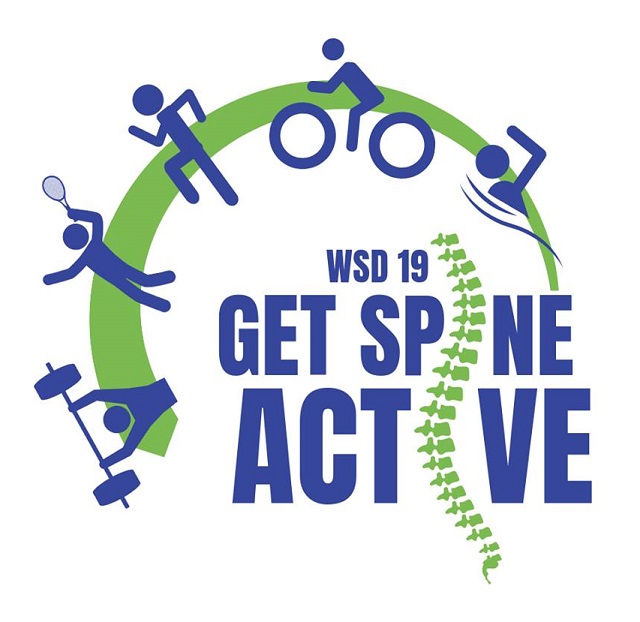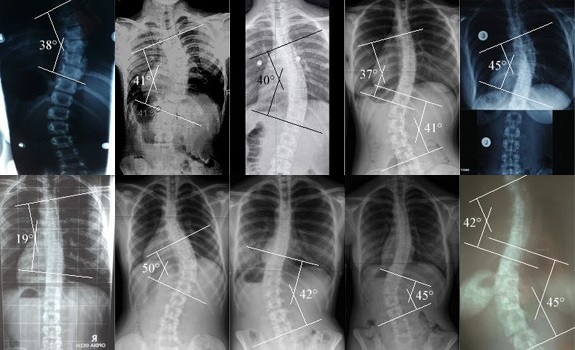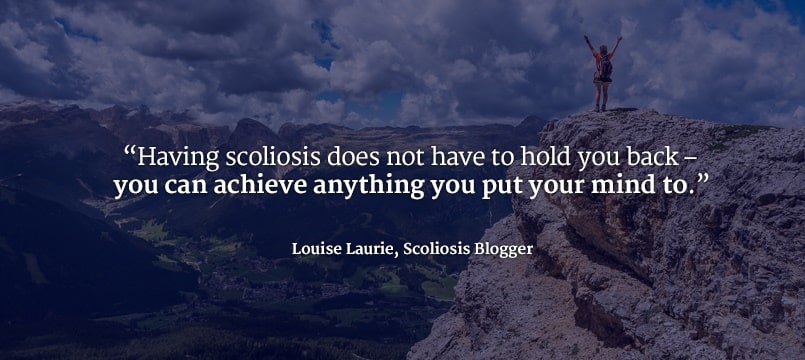
These days, the calendar is overflowing with specific dates dedicated to a cornucopia of themes, recognising everything from ‘World Chocolate Day’ to ‘Talk Like a Pirate Day’.
While events like those may seem a little unnecessary (although any excuse to eat chocolate is fine by us), one date that’s likely to be of particular interest to scoliosis patients is World Spine Day.
What is World Spine Day?
Celebrated annually on the 16th of October, World Spine Day aims to raise awareness of back pain and spinal conditions.
World Spine Day is a recognised date on every continent, with health professionals, schoolchildren and patients alike taking part across the globe.
A key part of World Spine Day is promoting the importance of physical activity, good posture and healthy working conditions – all in aid of maintaining a healthy spine.
A Global Issue
According to World Spine Day’s own statistics, it’s estimated that a billion people worldwide suffer from back pain, and that it’s the single biggest cause of disability on the planet.
Anyone with scoliosis will likely be well aware of the importance of spinal health, and so this special day dedicated to raising awareness is a welcome addition to the diary.
Get Involved with World Spine Day
World Spine Day has over 500 official organisational supporters across the globe, ranging from the NHS to the Hong Kong International Hula Association.
However, you don’t need to be part of a larger organisation to participate. In fact, just about anyone can show their support and help to raise awareness of scoliosis and spinal health in general.
How Can I Support World Spine Day?
If you have scoliosis or have seen the effects of scoliosis first-hand, why not share your story with others?
Tales of triumph over adversity are great for providing hope and inspiration to others in a similar situation.
Simply sharing your own success story or telling people what living with scoliosis is really like can have a profound effect on others and could provide motivation to someone in need.
About the Scoliosis SOS Clinic Book a Scoliosis Consultation

As you may already be aware, June is Scoliosis Awareness Month (culminating in International Scoliosis Awareness Day on Saturday 29 June).
If you’re looking to help fly the scoliosis flag this month, there are lots of ways to help raise awareness – here are just a few ideas to get your cogs turning:
1. Social Media
It’s no secret that social media is an incredibly powerful tool. This applies just as much to your personal social media accounts as it does to those owned by businesses, brands and celebrities.
If you want to get the word out to your friends, followers and family members, a simple Facebook update, tweet or Instagram post can go a surprisingly long way. Including a ‘please share’ request within your post will encourage people to spread the word to their own social spheres.
2. Flyers
If you’re not big on social media, offline methods can work too. Printed flyers can be extremely impactful when it comes to informing and educating your community.
Producing flyers can be surprisingly economical, too – particularly if you shop around. Once you’ve got a stack of flyers ready, distribution can be as simple as standing in the centre of town and handing them out. You may also be able to place your flyers in local cafés, shops and other locations (but be sure to ask permission first).
3. Viral Challenges
Remember the ALS Ice Bucket Challenge? It was a sensation back in 2014: countless people, including a number of politicians and celebrities, shared videos of themselves getting soaked in order to raise awareness and funds for motor neurone disease charities across the globe.
We’re not suggesting that you subject yourself to a bucket of ice-cold water, but you could definitely look to the viral success of the Ice Bucket Challenge for inspiration. Why not think of your own unique challenge, give it a catchy name, and get filming? Then post the video online, challenge three of your friends, and see where it leads!
4. Posters
A memorable, well-designed poster can be a great way to get a point across. If you’re not much of a designer yourself, it’s well worth paying a professional to put something together for you – posters work best when they’re really eye-catching!
Strategic placement is important to make sure your poster is seen. Ask you family and friends to help you get your posters in densely-populated, high-footfall areas like busy streets, community centres, and places of business.
5. Speeches
If you’re a confident public speaker, Scoliosis Awareness Month is a great time to put that talent to use. Giving a talk at – for example – a local school is a superb way to get the message out to people who might not otherwise have heard it. This is especially true if you yourself have scoliosis and can comment on what it’s like to live with a curved spine.
If appropriate, you could even follow up your speech with a collection bucket to make the most of your platform and raise funds for a scoliosis charity of your choosing.
6. Merchandise
Pens, badges, hats, T-shirts…branded merchandise is a great way to promote a cause, and if you can afford it, you may want to consider using customised merch to raise awareness of scoliosis.
You could give your merchandise away for free as a promotional exercise, or sell it to raise funds for a worthy charity – either way, don’t be afraid to get creative!
7. School / Work
Whether you’re in school, university, or the world of work, getting your classmates / colleagues involved in your quest to boost scoliosis awareness will help you to cover a lot more ground.
Here’s the golden rule: the simpler the task, the more likely people are to participate. Try to keep your requests nice and straightforward – for instance, you could encourage everyone to wear green for scoliosis, or change their email signature in recognition of Scoliosis Awareness Month. If you’re feeling ambitious, you could even organise a bake sale and donate the proceeds to a scoliosis charity.
8. Local News
Even in this ultra-connected era, lots of people still read the local paper – or indeed the local paper’s website.
Journalists are always looking for ideas, and they love local interest stories that focus on real people and the challenges they face. If you have struggled with scoliosis and achieved something special, now is the perfect time to celebrate it. In a world that can sometimes feel like it’s bursting with bad news, a slice of positivity should be an easy sell that your local journos welcome with open arms.
More on Scoliosis Awareness Month About Scoliosis SOS

Scoliosis is a condition that affects people from all walks of life. Countless people with scoliosis use social media, blogs and other media outlets to share their personal experiences and offer support to others.
Here are just a few scoliosis quotes from people who have dealt with their condition in the public eye:
Celebrities
A number of well-known public figures have used their positions of influence to raise awareness about scoliosis and to be positive role models for others with the condition.
Princess Eugenie of York, British Royal
Here’s what Princess Eugenie said after her wedding to Jack Brooksbank, during which she wore a dress that showed off the scar from her spinal fusion surgery:
“I believe scars are like memories that tell a story on your body, that remind you of how strong you had to be, and that you survived to talk about it. Your scars are a way of communicating, and sharing a trauma can be healing in so many ways – it can release the stigma you might have given to yourself, and by talking about it, you can show people how they can heal too.”
Kurt Cobain, American Musician
Here is an excerpt from an interview that the troubled Nirvana frontman gave in 1993:
“When I stand, everything is sideways, it’s weird…I go to a chiropractor every once in a while…most people have a small curvature in their spine anyhow, though some people have it really bad and have to wear metal braces. It gives me back pain all the time. That really adds the pain to our music. It really does. I’m kind of grateful for it.”
Usain Bolt, Jamaican Athlete
Here’s what Bolt had to say when asked about his scoliosis in a 2011 interview with ESPN:
“When I was younger it wasn’t really a problem. But you grow and it gets worse. My spine’s really curved bad…but if I keep my core and back strong, the scoliosis doesn’t really bother me. So I don’t have to worry about it as long as I work hard.”
See Also: Famous People with Scoliosis
Scoliosis Influencers
We at Scoliosis SOS have been lucky enough to speak with a number of inspiring people who are working to raise awareness of scoliosis and provide support for those who have it. Here is some of their advice for people with scoliosis:
Leah Stoltz, Founder of Curvy Girls
“Talk about how you’re feeling! Don’t keep it bundled inside. Find support: a trusted friend, a parent, an online forum, Instagram page, Facebook group, book…there are so many ways to feel supported and to talk with other girls who are going though what you are going through.”
Read Full Interview >
Rachel Mulvaney, Vice President of Curvy Girls
“Throughout my bracing years, I was told that my chronic back pain did not exist because scoliosis ‘does not cause any pain’. I was one of many patients who was spoken to in this way. But after learning a programme [the Schroth method] that both validated and eliminated my pain, I was determined to spread the word. I wanted to make sure all Curvy Girl families had the opportunity to know that this treatment existed.”
Read Full Interview >
Louise Laurie, Scoliosis Blogger
“Every case is different, but I would say that mindset is everything. I used to feel so down about my back, but I’ve realised that having scoliosis does not have to hold you back – you can achieve anything you put your mind to.”
Read Full Interview >
@scolilife, Scoliosis Tweeter
“As cheesy as it sounds, things get better. When I was diagnosed, I thought my life was over – it was the biggest deal, and no matter what, everything seemed like bad news or just another complication to add to my growing list. But soon enough, you adjust to the brace. The X-rays become fun. The appointments become bonding time with your family. Your scoliosis becomes a point of pride rather than disappointment, and you become stronger and more independent because of it.”
Read Full Interview >
Chloe Donhou, Spinal Fusion Patient
Chloe underwent spinal fusion surgery live on Channel 5 earlier this year, a spectacle that gave viewers a real insight into what scoliosis surgery actually entails. Here’s something she said after sitting for a painting that was featured on scoliosis blog The Curvy Truth:
“I have always felt the need to cover up my scoliosis as I hated the way my back looked. Wearing clothes was difficult as I felt they sat weirdly on my back. I became so annoyed with myself that I couldn’t just accept it, so I felt that having this piece [a painting of her back] done would allow me to see that it really isn’t that bad after all. The painting is now hung up on my bedroom wall and I see it every day. Seeing it all the time really allowed me to come to terms with it – I accept who I am and I love me for it!”
If you are suffering from scoliosis, don’t think you are alone. There are people all around who are willing to help and support you – for instance, take a look at our list of scoliosis support groups around the world.
Scoliosis SOS: Who Are We? Book a Scoliosis Consultation

Every year, scoliosis sufferers and those close to them recognise the month of June as Scoliosis Awareness Month. This is an annual opportunity for people all over the world to come together, speak out about life with a curved spine, and educate others about what it means to have scoliosis.
This month-long event culminates in International Scoliosis Awareness Day, which falls on the last Saturday of June (meaning that the date to remember this year is 29th June 2019). The UK Scoliosis Association (SAUK) launched International Scoliosis Awareness Day six years ago – here, in the organisation’s own words, is why they did it:
“SAUK launched ISAD in 2013 to unite people across the world to create positive public awareness of scoliosis, promote education, and bring together those affected.”
How do people mark Scoliosis Awareness Month?
People mark this annual occasion in a number of different ways. If you use Twitter, keep an eye out for the hashtag #ScoliosisAwarenessMonth – throughout June, people with scoliosis use this tag to share their stories, their X-ray scans, and photos of their curved backs and surgery scars. All of these posts are intermingled with advice for fellow scoliosis patients and useful information about the condition.
There will also be a number of events taking place in recognition of Scoliosis Awareness Month. In June 2017, for instance, the Curvy Girls support group organised a large walk in New Jersey to raise awareness of spinal curvature.
4 things you should know about scoliosis
We’re keen to do our bit for Scoliosis Awareness Month too, so here – for the benefit of anyone who is unfamiliar with this condition – are 4 things we think everyone should know about scoliosis. Feel free to share this post to help raise awareness!
1. What is scoliosis?
Scoliosis is a condition where the spine curves sideways, often resulting in symptoms such as pain, reduced flexibility, muscular imbalance, and (in extreme cases) compromised breathing.
Watch our video to find out more:
For a rough idea of what scoliosis actually looks like, consult the diagram below. However, do bear in mind that every case of scoliosis is different – symptoms, severity, and curve location vary hugely from one person to the next.

2. How common is scoliosis?
Scoliosis affects roughly 4% of people worldwide (i.e. approximately 1 in 25 people). It can occur in any individual regardless of age or gender; however, it is most commonly found in adolescent girls. Read more >
3. What causes scoliosis?
There are many different types of scoliosis with many possible causes. By far the most common form is idiopathic scoliosis, which usually develops during adolescence and has no known cause, though it is thought to be linked to genetic factors.
However, scoliosis can also be caused by:
- Birth defects
- Old age
- A wide range of conditions including muscular dystrophy, cerebral palsy, spondylolisthesis, and many more
It’s worth noting that scoliosis is NOT caused by carrying heavy bags, though this is a common misconception. Read more >
4. How is scoliosis treated?
Scoliosis can be treated using a number of different methods, with bracing and spinal fusion surgery being the most common. Here at the Scoliosis SOS Clinic in London, England, we treat scoliosis using a combination of non-surgical, exercise-based techniques that we call the ScolioGold method. This approach – using physical therapy to reduce the patient’s spinal curve and improve their quality of life – has shown itself to be very effective. View results >
If you need more information about scoliosis, or if you’re interested in the treatment courses we provide here at Scoliosis SOS, please don’t hesitate to get in touch.
Treatment Dates 2019 Book a Consultation
